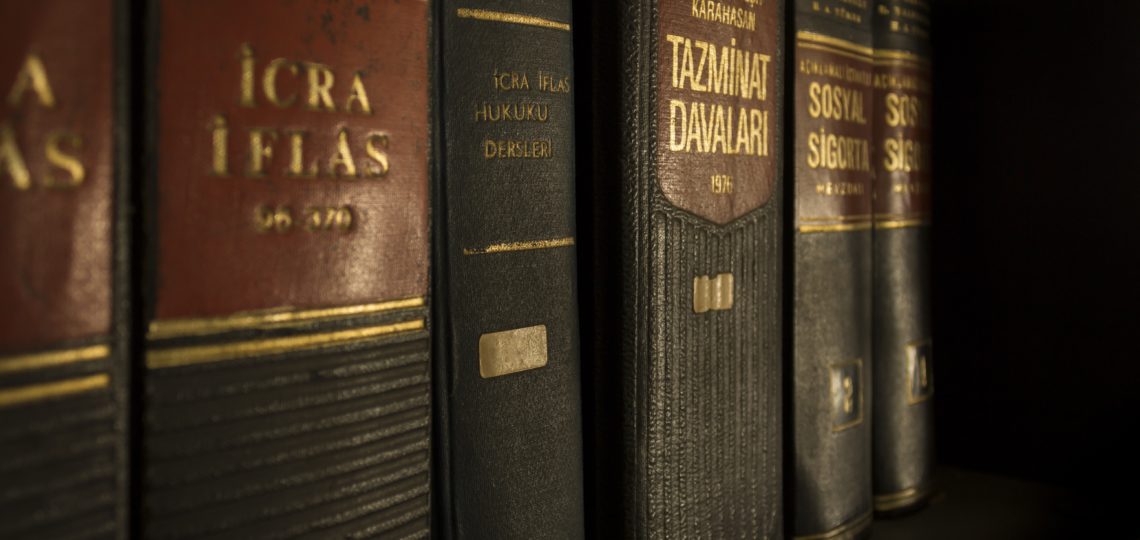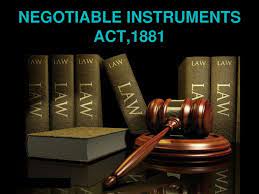Application of Section 17, 18 and 19 of the Enforcement of Security Interest and Recovery of Debts Laws and Miscellaneous Provisions (Amendment) Act, 2016 and its Effect on SARFAESI Act
Introduction
India’s banking sector crisis is just the old wine in a new bottle and the sole reason for such a withered position is the inflation of bad debts. Where the bank is termed as the fuel of business, it has been overburdened due to the decline in the profitability of commercial sector banks. Securitisation and Reconstruction of Financial Assets and Enforcement of Security Interest Act, 2002 or SARFAESI Act came as a saviour to lighten the unpleasant situation. The Narasimham Committee recommended that the legislative instrument allows for the bank to encash the financial assets which were pledged or mortgaged while availing the loans without the need of Court intervention by selling the assets directly to ARC (Asset reconstruction companies).
This Act empowers three methodologies to recuperate NPAs i.e. Securitization, Asset Reconstruction, and Security Enforcement without Court’s intervention. On 12th August, 2016, the Ministry of Law and Justice intended amendments to specific sections of the SARFAESI Act but were not notified. After three years, on 26th December, 2019, three of the sections of the amendment Act i.e. Section 17, 18, and 19 were notified in the official gazette to be brought into effect from January 24, 2020, which were termed as SARFAESI Amendments.
Amendments
The sections of SARFAESI amendments that are notified to come in effect from 24th Jan, 2020 which will in turn amend the SARFAESI Act are Sections 17, 18, and 19. Chiefly, these sections belong to Enforcement of Security Interest and Recovery of Debts Laws and Miscellaneous Provisions (Amendment) Act, 2016 that incorporates amendments to be brought under SARFAESI Act through Notification No SO. 4619 (E) dated 26th December 2019 . These amendments mainly revolve around registration of security interest by Secured and other Creditors, effect of registration of transactions, and right of enforcement of securities and priority to Secured Creditors.
SECTION 17 OF THE AMENDMENT
This section deals with the amendment to be brought under Section 23 of the SARFAESI Act. Section 23 at present deals with the Filing of transactions of securitisation, reconstruction and creation of security interest and can be found in Chapter IV of the Act. Presently, every transaction has to be filed with the Central Registrar within thirty days (30) after the date of such transaction or creation of security by the securitisation company or Reconstruction Company or the Secured Creditor. This position now has been eclipsed by the Amendment and the thirty-day (30) period has been omitted. Further, a right has been provided to Central Government to notify those types of transactions referring to the creation of a security interest over the property which requires registration with the Central Registry of Securitisation Asset Reconstruction and Security Interest (CERSAI) which in turn is a central online security interest registry of India.
SECTION 18 OF THE AMENDMENT
This amending Section has hosted a new chapter to the SARFAESI Act i.e. Chapter IV-A. The subject-matter of the inserted chapter deals with the registration of Secured Creditors and other creditors. Section 26-B to Section 26-E has been added into the legislation through this newly introduced chapter.
Currently Chapter IV deals with Central registry that articulates registration of transaction of securitization and reconstruction of financial assets and creation of security interests under this act.
Section 26-B
In this section, the Central Government has extended the scope of registration including in its periphery all the creditors (other than Secured Creditors as defined under 2(1)(zd)) for creation, modification or satisfaction of any security interest over any property of the borrower. Earlier, Securitisation Company or Reconstruction Company or the Secured Creditor has to file the details with Central Registry but after the amendment now the creditor much like the others above-mentioned will also have to file particulars of the transaction with the CERSAI. However, these creditors (other than Secured Creditors) will still remain disentitled to exercise any right of enforcement of securities under this Act. Moreover, this section permits both; the Government authorities as well as the any individual having attachment order w.r.t. a property file the attachment order with CERSAI.
Section 26-C
This clause articulates the effect of registration of the transactions by Secured Creditor or other creditor and the filing of attachment orders as per this Chapter. The effect is that such registration will be deemed to constitute a public notice from the date of its filing so as to make aware of the existence of interests that is been levied on the property. Furthermore, these claims which are pre-registered with CERSAI shall take the position of priority by overriding any subsequent interest created on that same property which means that, an unregistered creditor will not be able to claim the priority as enjoyed by the registered security interest.
Section 26-D
This section has a limited approach keeping it only to the Secured Creditors. This section illuminates that Secured Creditors who have not duly registered the security interest with the CERSAI shall not be entitled to exercise the right of enforcement of securities under Chapter III. It basically curtails the enforcement right of an un-registered secured interest of a Secured Creditor. Earlier non-registration by a Secured Creditor does not lose its claim wholly but now the position has been changed.
Section 26-E
This section deals with the privileged priority that a Secured Creditor enjoys over the debts and revenues, etc. payable to the Government authorities. The reasoning of this amendment is to harmonize the provisions of this Act with Section 53 of the Insolvency and Bankruptcy Code that pertains to the liquidation process and a Waterfall Mechanism for the distribution of assets. However, this Section states an explanation to the priority rule that where the proceedings under IBC are pending, the priority of secured creditors in payment of debt shall be subject to the provisions of that Code. Their claims over secured assets getting priority over other claimants reinforces the basic principles of bank lending against charged security.
SECTION 19 OF THE AMENDMENT
Section 19 has its sole effect on Section 27 of the SARFAESI Act which currently incorporates Penal provisions with a penalty on defaulters up to 5,000 per day for default in filing (Section 23), modifying (Section 24), and satisfaction (Section 25) of security interests. Through this Section 19 of the amendment Act coming into effect, Section 27 of the SARFAESI Act has been omitted those penal provisions that were covered under Section 27 will now be ineffective.
Conclusion
These amendments made in the SARFAESI Act have aggrandized the scope of a creditor to include creditors other than secured creditors. Such out of weight creditors have gained a respectful seat through registration under SARFAESI in improving recovery. Besides, by making registration with CERSAI which is a condition precedent for getting right to enforcement; it will also help the Central government to integrate the database of security interests over an asset.
Furthermore, now Secured creditors who are registered with CERSAI shall enjoy the priority by overriding the government dues and revenues on such assets due to the privilege they enjoy. These amendments have been added to bring consistency with the subsisting provisions of IBC code rather than contradicting them. However, the practical advantage or disadvantage of the amendment Act can be analysed only after its examination when it brought into effect.









 He holds a Bachelor’s and Master’s Degree in Corporate Secretaryship and a Degree in Law. He is a Fellow member of the Institute of Company Secretaries of India and an Associate Member of the Corporate Governance Institute, UK and Ireland. He has also completed a program from ISB on ‘Value Creation through Mergers and Acquisitions.
He holds a Bachelor’s and Master’s Degree in Corporate Secretaryship and a Degree in Law. He is a Fellow member of the Institute of Company Secretaries of India and an Associate Member of the Corporate Governance Institute, UK and Ireland. He has also completed a program from ISB on ‘Value Creation through Mergers and Acquisitions. Mr P Muthusamy is an Indian Revenue Service (IRS) officer with an outstanding career of 30+ years of experience and expertise in all niche areas of Indirect Taxes covering a wide spectrum including GST, Customs, GATT Valuation, Central Excise and Foreign Trade.
Mr P Muthusamy is an Indian Revenue Service (IRS) officer with an outstanding career of 30+ years of experience and expertise in all niche areas of Indirect Taxes covering a wide spectrum including GST, Customs, GATT Valuation, Central Excise and Foreign Trade. During his judicial role, he heard and decided a large number of cases, including some of the most sensitive, complicated, and high-stake matters on insolvency and bankruptcy, including many cases on resolution plans, shareholder disputes and Schemes of Amalgamation, De-mergers, restructuring etc.,
During his judicial role, he heard and decided a large number of cases, including some of the most sensitive, complicated, and high-stake matters on insolvency and bankruptcy, including many cases on resolution plans, shareholder disputes and Schemes of Amalgamation, De-mergers, restructuring etc., Ms. Sarah Abraham has been enrolled with the Bar Council of Tamil Nadu since 1998. Her areas of practice include Shareholder Disputes, Corporate Compliances, Mergers and Acquisitions, Private Equity/ Venture Capital Agreements and allied disputes, Information Technology Contracts, Intellectual Property, General Commercial Agreements, Litigation, Arbitration and Mediation.
Ms. Sarah Abraham has been enrolled with the Bar Council of Tamil Nadu since 1998. Her areas of practice include Shareholder Disputes, Corporate Compliances, Mergers and Acquisitions, Private Equity/ Venture Capital Agreements and allied disputes, Information Technology Contracts, Intellectual Property, General Commercial Agreements, Litigation, Arbitration and Mediation. A K Mylsamy is the Founder, Managing Partner and the anchor of the firm. He holds a Degree in law and a Degree in Literature. He is enrolled with the Bar Council of Tamil Nadu.
A K Mylsamy is the Founder, Managing Partner and the anchor of the firm. He holds a Degree in law and a Degree in Literature. He is enrolled with the Bar Council of Tamil Nadu. M Subathra holds a Degree in law and a Master’s Degree in International Business Law from the University of Manchester, United Kingdom. She is enrolled with the Bar Council of Tamil Nadu.
M Subathra holds a Degree in law and a Master’s Degree in International Business Law from the University of Manchester, United Kingdom. She is enrolled with the Bar Council of Tamil Nadu. Mr. K Rajendran is a former Indian Revenue Service (IRS) officer with a distinguished service of 35 years in the Indirect Taxation Department with rich experience and expertise in the fields of Customs, Central Excise, Service Tax and GST. He possesses Master’s Degree in English literature. Prior to joining the Department, he served for the All India Radio, Coimbatore for a period of about 4 years.
Mr. K Rajendran is a former Indian Revenue Service (IRS) officer with a distinguished service of 35 years in the Indirect Taxation Department with rich experience and expertise in the fields of Customs, Central Excise, Service Tax and GST. He possesses Master’s Degree in English literature. Prior to joining the Department, he served for the All India Radio, Coimbatore for a period of about 4 years. An MBA from the Indian Institute of Management, Calcutta, and an M.Sc. in Tourism Management from the Scottish Hotel School, UK, Ashok Anantram was one fo the earliest IIM graduates to enter the Indian hospitality industry. He joined India Tourism Development Corporation (ITDC) in 1970 and after a brief stint proceeded to the UK on a scholarship. On his return to India, he joined ITC Hotels Limited in 1975. Over the 30 years in this Organisation, he held senior leadership positions in Sales & Marketing and was its Vice President – Sales & Marketing. He was closely involved in decision making at the corporate level and saw the chain grow from a single hotel in 1975 to a very large multi-brand professional hospitality group.
An MBA from the Indian Institute of Management, Calcutta, and an M.Sc. in Tourism Management from the Scottish Hotel School, UK, Ashok Anantram was one fo the earliest IIM graduates to enter the Indian hospitality industry. He joined India Tourism Development Corporation (ITDC) in 1970 and after a brief stint proceeded to the UK on a scholarship. On his return to India, he joined ITC Hotels Limited in 1975. Over the 30 years in this Organisation, he held senior leadership positions in Sales & Marketing and was its Vice President – Sales & Marketing. He was closely involved in decision making at the corporate level and saw the chain grow from a single hotel in 1975 to a very large multi-brand professional hospitality group. Mani holds a Bachelor Degree in Science and P.G. Diploma in Journalism and Public Relations. He has a rich and varied experience of over 4 decades in Banking, Finance, Hospitality and freelance Journalism. He began his career with Andhra Bank and had the benefit of several training programs in Banking.
Mani holds a Bachelor Degree in Science and P.G. Diploma in Journalism and Public Relations. He has a rich and varied experience of over 4 decades in Banking, Finance, Hospitality and freelance Journalism. He began his career with Andhra Bank and had the benefit of several training programs in Banking. Mr. Kailash Chandra Kala joined the Department of Revenue, Ministry of Finance as ‘Customs Appraiser’ at Mumbai in the year 1993.
Mr. Kailash Chandra Kala joined the Department of Revenue, Ministry of Finance as ‘Customs Appraiser’ at Mumbai in the year 1993.
 S Ramanujam, is a Chartered Accountant with over 40 years of experience and specialization in areas of Corporate Tax, Mergers or Demergers, Restructuring and Acquisitions. He worked as the Executive Vice-President, Group Taxation of the UB Group, Bangalore.
S Ramanujam, is a Chartered Accountant with over 40 years of experience and specialization in areas of Corporate Tax, Mergers or Demergers, Restructuring and Acquisitions. He worked as the Executive Vice-President, Group Taxation of the UB Group, Bangalore. K K Balu holds a degree in B.A and B.L and is a Corporate Lawyer having over 50 years of Legal, Teaching and Judicial experience.
K K Balu holds a degree in B.A and B.L and is a Corporate Lawyer having over 50 years of Legal, Teaching and Judicial experience. Justice M. Jaichandren hails from an illustrious family of lawyers, academics and politicians. Justice Jaichandren majored in criminology and then qualified as a lawyer by securing a gold medal. He successfully practiced in the Madras High Court and appeared in several civil, criminal, consumer, labour, administrative and debt recovery tribunals. He held office as an Advocate for the Government (Writs Side) in Chennai and was on the panel of several government organizations as senior counsel. His true passion lay in practicing Constitutional laws with focus on writs in the Madras High Court. He was appointed Judge, High Court of Madras in December 2005 and retired in February 2017.
Justice M. Jaichandren hails from an illustrious family of lawyers, academics and politicians. Justice Jaichandren majored in criminology and then qualified as a lawyer by securing a gold medal. He successfully practiced in the Madras High Court and appeared in several civil, criminal, consumer, labour, administrative and debt recovery tribunals. He held office as an Advocate for the Government (Writs Side) in Chennai and was on the panel of several government organizations as senior counsel. His true passion lay in practicing Constitutional laws with focus on writs in the Madras High Court. He was appointed Judge, High Court of Madras in December 2005 and retired in February 2017. S Balasubramanian is a Commerce and Law Graduate. He is a member of the Delhi Bar Council, an associate Member of the Institute of Chartered Accountants of India, the Institute of Company Secretaries of India and Management Accountants of India.
S Balasubramanian is a Commerce and Law Graduate. He is a member of the Delhi Bar Council, an associate Member of the Institute of Chartered Accountants of India, the Institute of Company Secretaries of India and Management Accountants of India.